Toilet Cubicles
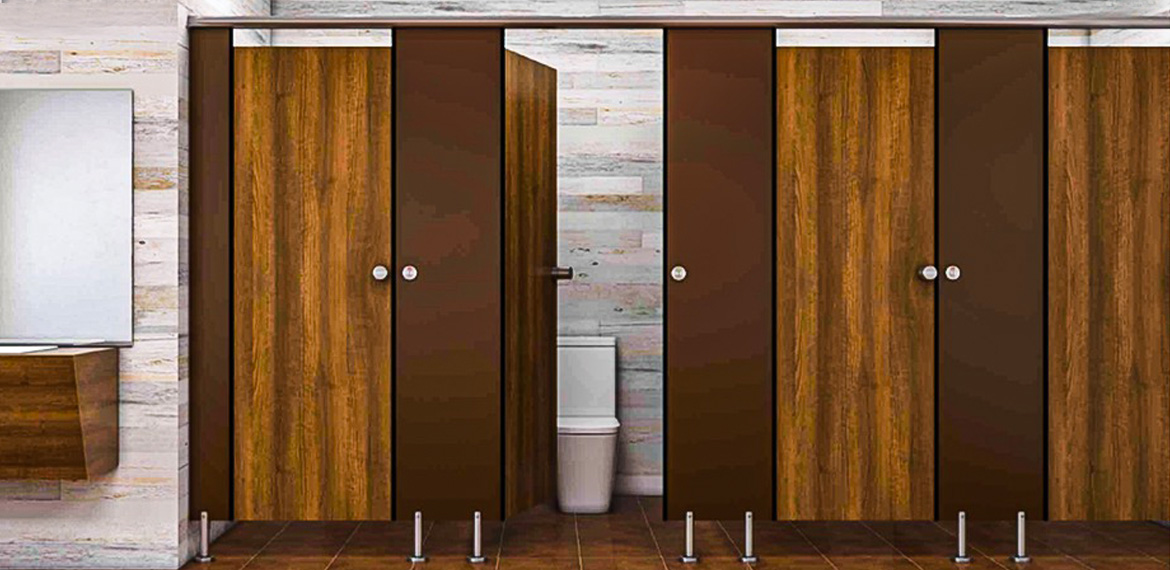
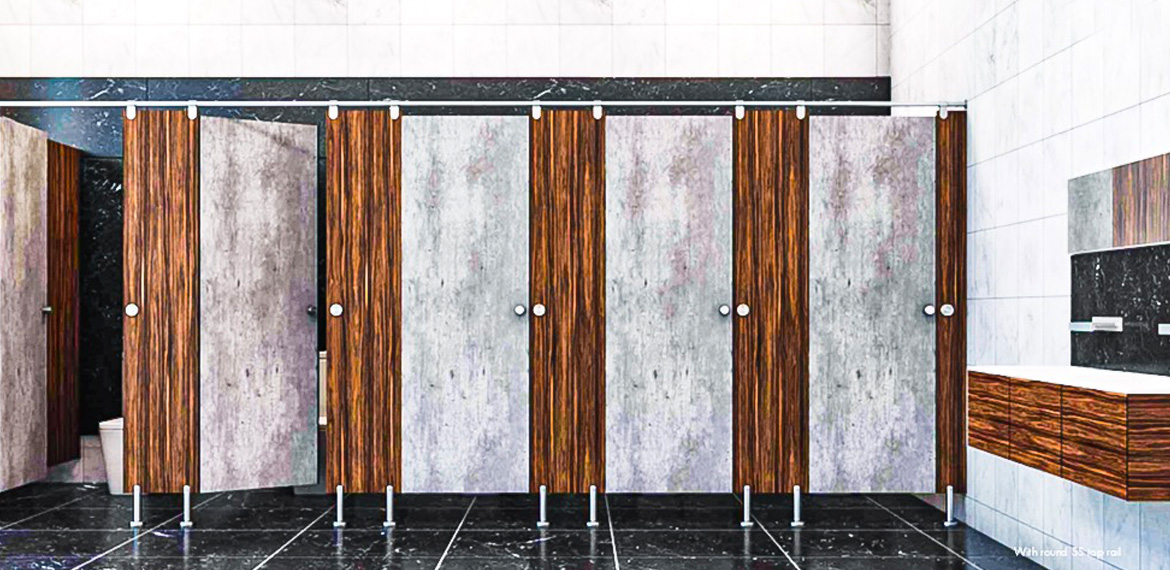
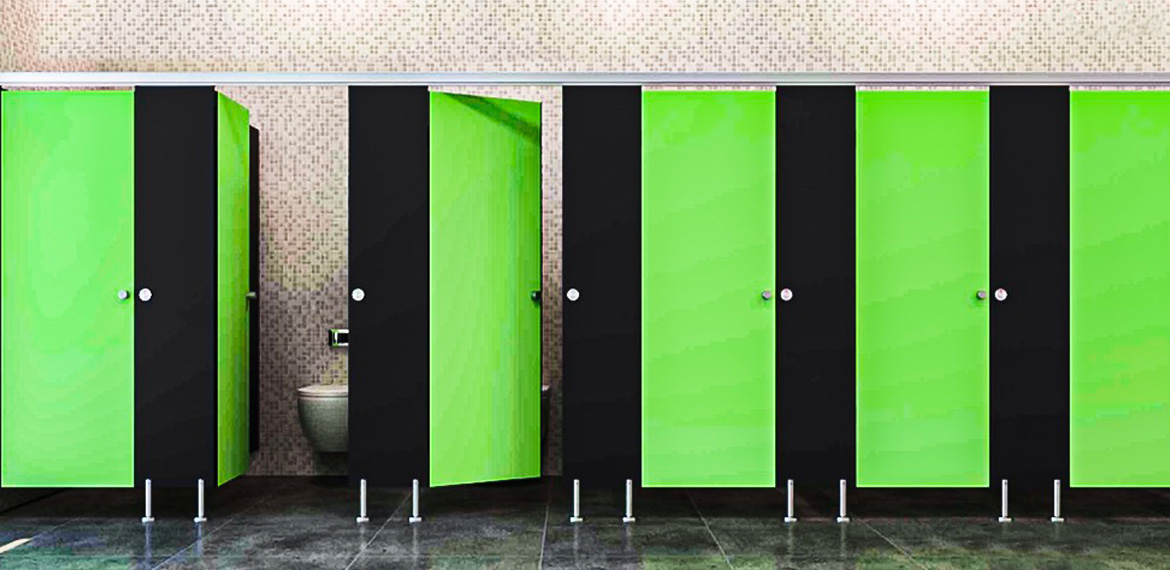
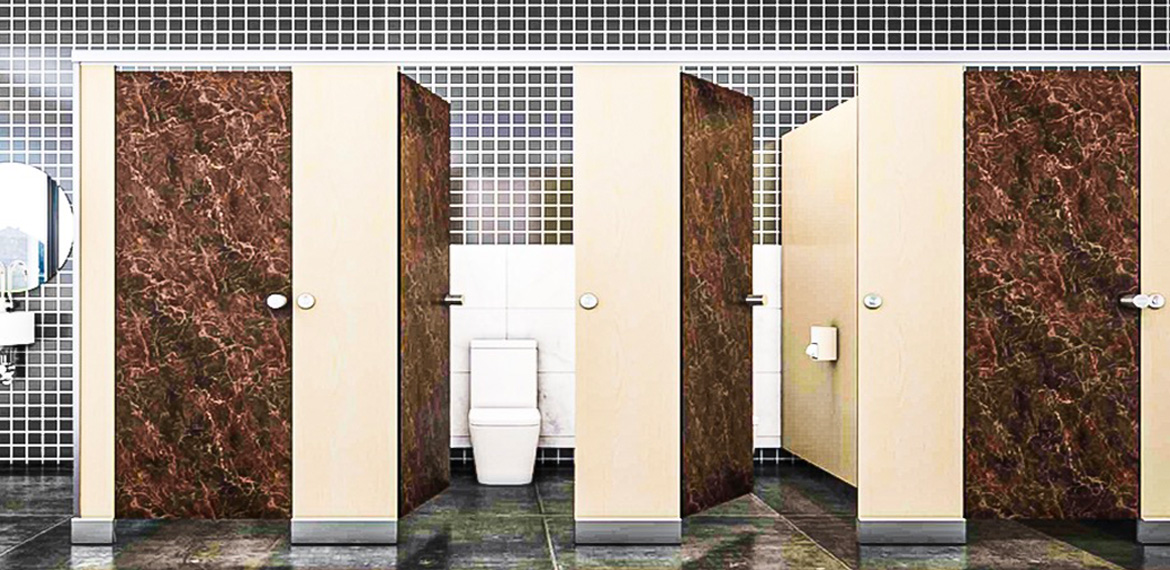
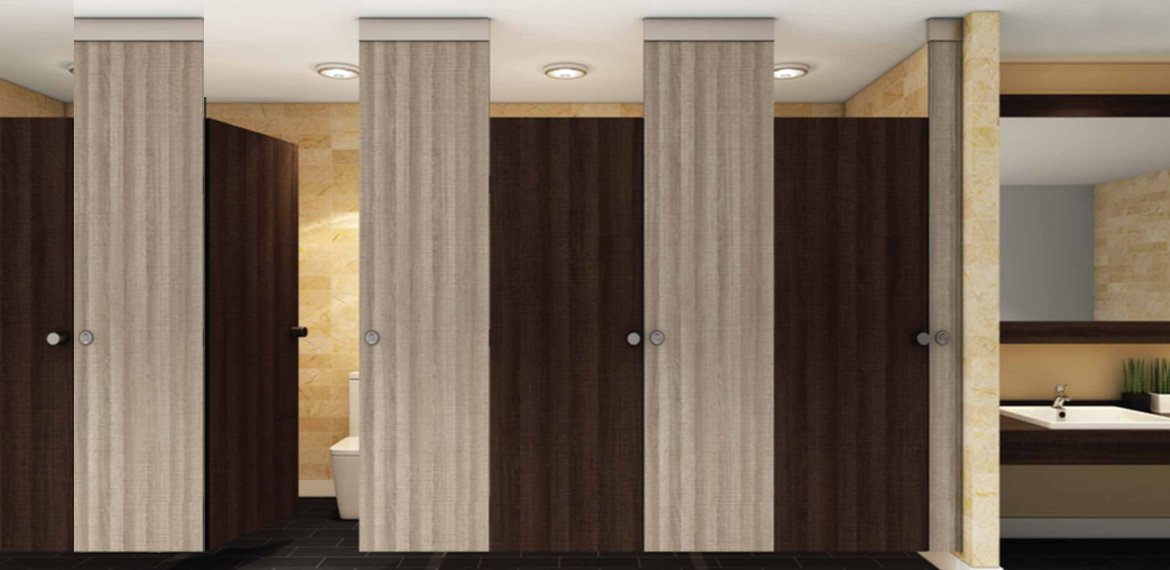
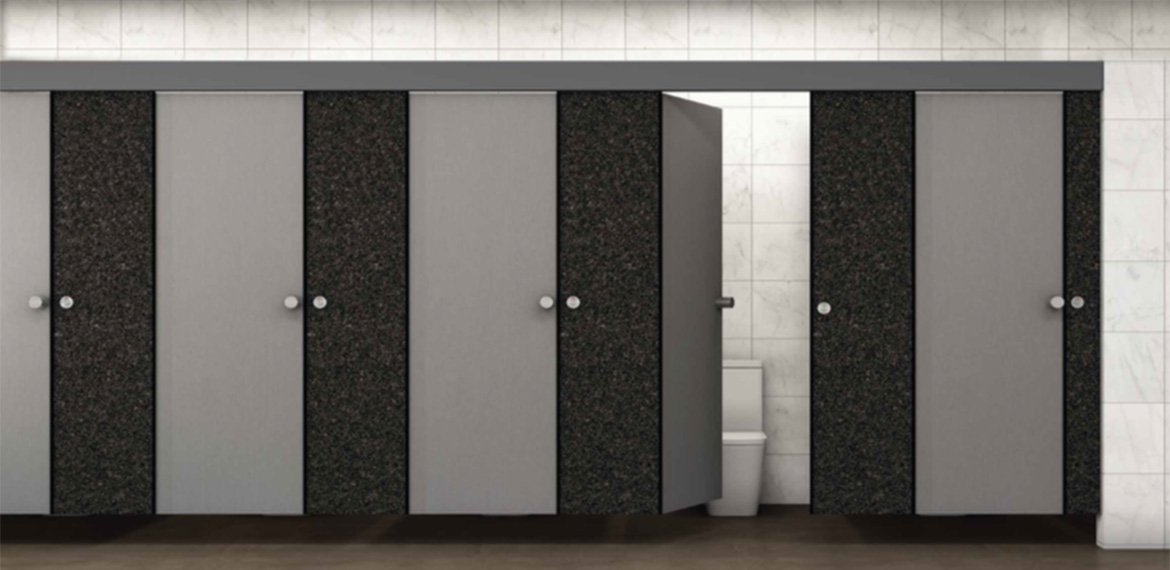
DISI toilet cubicles have been specially designed for use for locations such as offices, shops, schools, pubs & clubs, restaurants and leisure facilities and are manufactured with accurate specifications and high quality.
Standard
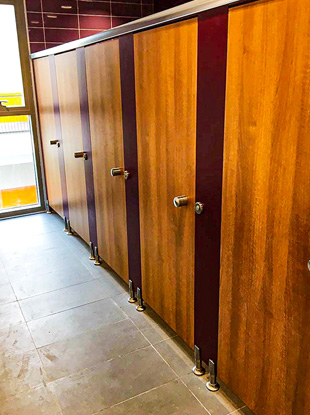
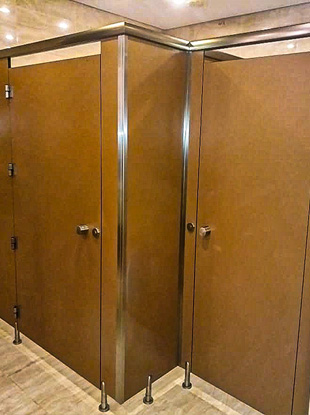
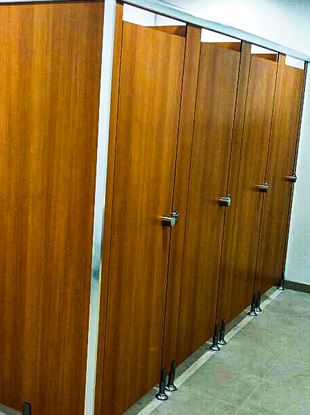
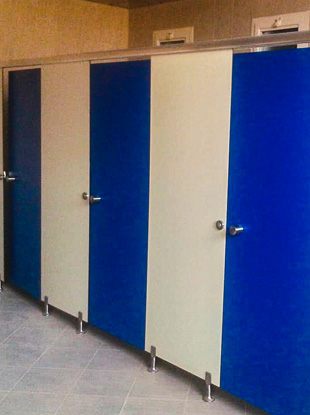
Nylon
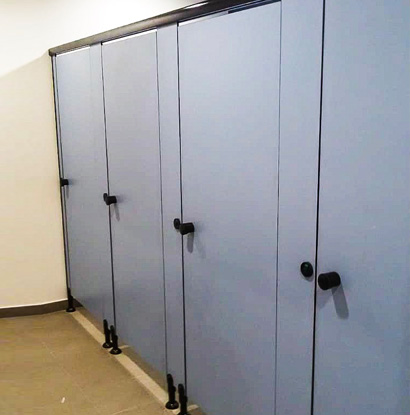
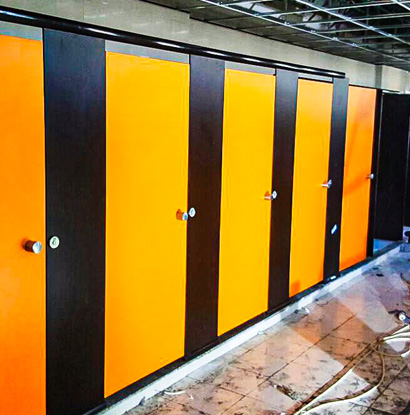
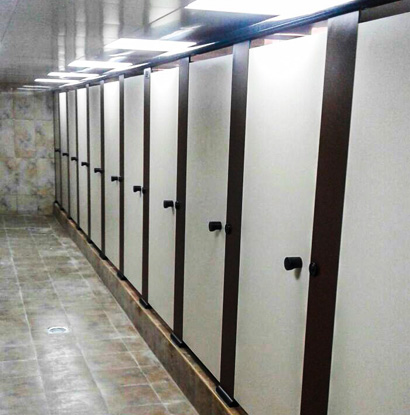
H Frame
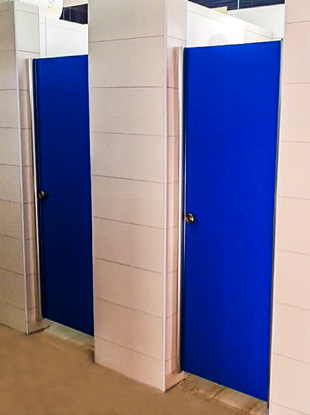
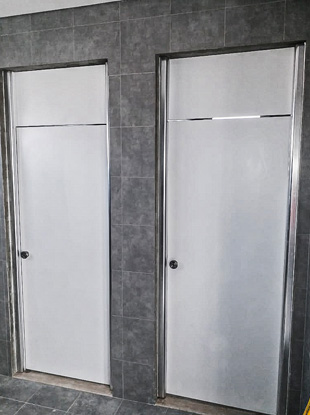
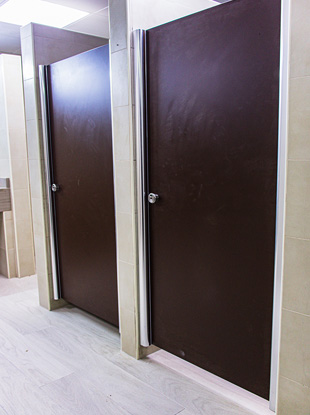
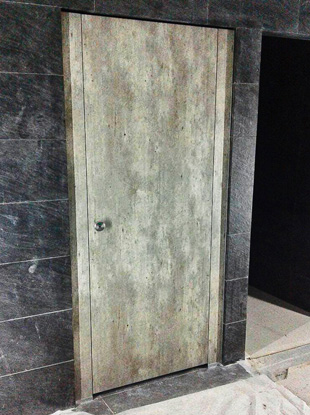
With Shoe Box

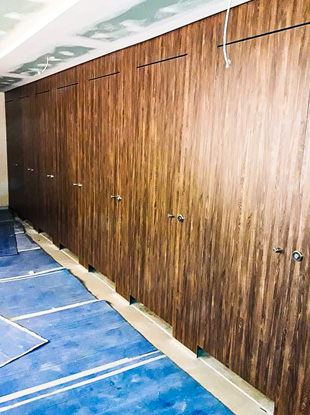
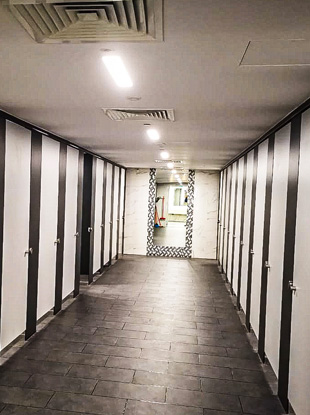
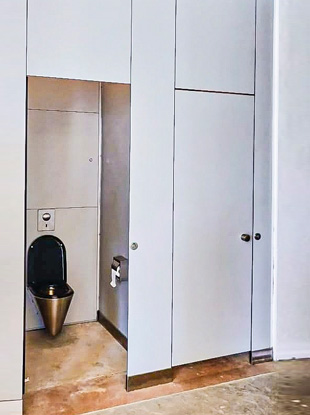
Athena Lite
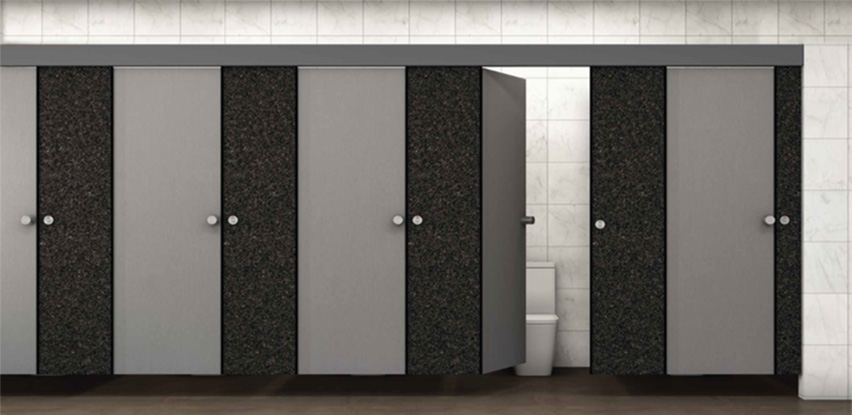
Ceiling Hung
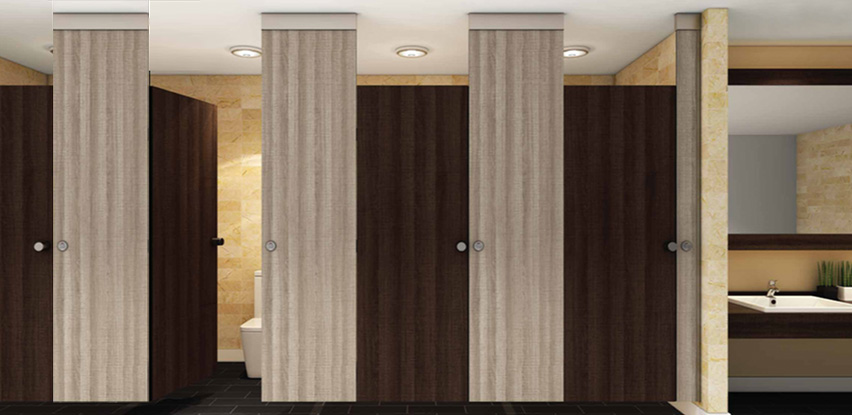
Product Description:
Straight from the house of Merino Laminates; the Compact sheets are powered with high standard mechanical grade properties with impact bearing characteristic features. It means that these sheets bear celluloid fibres impregnated in its inner core to resist impact pressures and thermosetting resins to protect against atmospheric and chemicals abuses.
The sheets are available in various sizes and thickness, leaving no room to use substrate. However, the sheets can be easily applied on any flat and free standing panels for decorative purposes. The Compact sheets from Merino are widely preferred for its easy and appealing applications on cubicles, furniture, partitions, panels, cubicles, and areas with higher cleaning and hygiene requirements.
Advantages:
- The Compact sheets are resistant to water, moisture, frost, stain, graffiti, bacteria growth, scratch, impact, fire, heat, cigarette burns, organic solvents and colour change
- Great dimensional stability and flatness
- Provides self-supporting function
- Non-corrosive and permanent traits
- Easy to clean
- Physiologically safe
- Meets stringent hygiene requirements, surface edges can be disinfected
- Low electrostatic charge-up
- Easy installation, space saving and easy to process
Application areas:
- Vertical
- Horizontal
Ideal for:
- Washroom partitions
- Washroom lockers and strips for decorative purposes
- Kitchen-tops
- Doors
- Table-tops
- Office
- Laboratory work-tops
- Various counter-tops such as front desks
- Office partition and wall panels
- Wall and floor decoration material
- Material for interior decorations
- Protective screen against damp, frost rain, sunlight and termites.
Other usages:
- Railway compartments
- Switch boards
- Well suited for wet area applications such as shower cubicles or swimming pool lockers, but are not recommended for applications involving long term immersions
Type of Product
Merino Compact Grade laminate
Core Type
Black core, Center line and Multistrip (alternative strips of different colour paper in the core)
Thickness
2.0mm to 25.0mm
Colors
All available color as per Merino Lam Catalogue
Size & Finish:
Available in following finishes & sizes:
** “Suede” Finish is also available in 49"x97" (1245mmx2464mm) & 49"x121" (1245mmx3075mm)
Available Standard Sizes (mm) for compact |
||||||||||
| Merino Finishes | 1220X2440 4’X8’ | 1220X3050 4’X10’ | 1300X3050 4.25’X10’ | 1550X2440 5’X8’ | 1550X3660 5’X12’ | 1830X3660 6’X12’ | 1830X4300 6’X14’ | 915X2150 3’X7’ | ||
|---|---|---|---|---|---|---|---|---|---|---|
| Suede | ✔ | ✔ | ✔ | ✔ | ✔ | ✔ | ✔ | ✔ | ||
| Matt | ✔ | ✔ | ✔ | |||||||
| Cement | ✔ | ✔ | ||||||||
| Opal | ✔ | ✔ | ✔ | ✔ | ||||||
| Crossfire | ✔ | ✔ | ||||||||
| Flicker | ✔ | ✔ | ||||||||
| Nuback Leather | ✔ | ✔ | ||||||||
| Gemstone | ✔ | |||||||||
| Drizzle | ✔ | |||||||||
| Sprinkle | ✔ | |||||||||
Fabrication
Compact Grade laminate imposes greater demand on cutting tools and causes greater wear & tear. The degree of feed speed reduction depends on the thickness of the laminate and the quality of finish required. For best performance, one should consult tool manufacturers for the type and quality of tungsten carbide tipping. For long production runs, and where a high quality finish is required, consider tooling. In all machine processes, avoid localized heating caused by poorly maintained saws and cutters.
- Always consult tool manufacturers for the type and quality of tungsten carbide tipping. Avoid localized heating caused by poorly maintained saws and cutters. For best finish, consider tooling.
- The panels should always be cut parallel to the long edge length of the sheet. Since the dimensional movement across the width of the sheet is twice as great as it is along the length, so cutting panels with the long dimension running across the width of the sheet greatly increases the risk of bowing.
- The temperature and humidity conditions at the back of the panels are essentially the same as those in the front. As it is important that both sides of the panel balance the moisture at the same rate to provide adequate ventilation, therefore, the ambient conditions should be the same on each side of the panel.
Sawing
- Double-sided composites saw blades are suitable for cutting Compact Grade laminates
- Saw with less than 2 mm thickness blades are not recommended
- Reduce Break-out on the underside of compact sheets, by:
a) Using a pre-scoring blade on the underside
b) Using a base-board of plywood or hardboard beneath the sheet
c) Altering the exit angle of the saw blade by adjusting the height setting - The Saw feed speed of 0.03 mm -0.05 mm per saw tooth has been found to be the most successful when sawing a Compact Grade laminate with two decorative faces.
Profile cutting and edge finishing
- Applying edging strips or sealants to Compact grade panels is not necessary. Clean sawn edges are sufficient.
- Always use spindle moulder or router to achieve superior finish or profiled edge. For this PCD tooling is recommended.
- Minimized cutter marks by feeding the work at a constant controlled speed with a mechanical power feed. Avoid pausing during cutting and profiling, which may result in burn marks that are difficult to remove. Always carry out sanding and scraping operation post cutting for clean edges. Buffing with steel wool and applying silicone free oil enhances edges. Chamfering or profiling the edges of Compact grade panels reduces the risk of edge impact damage.
Drilling
- Drills designed for plastic sheets with a point angle of 60°- 80° are the most suitable drills for use on Compact Grade laminates.
- Reducing the feed speed of drilling machine and applying pressure on drill head when approaching the point of breakthrough, avoid the break-out on the reverse side.
- For blind boring into the face, the depth of the hole should be such that at least 1.5 mm of material remains between the bottom of the hole and the other side of the sheet. TCT lip and spur drills produce clean flat-bottomed blind holes, with low risk of point penetration on the reverse side. This allows maximum depth of material to be used for fixings. Compact Grade sheets less than 10 mm thick are not suitable for blind fixing. When drilling parallel to the surface (edge drilling) at least 3 mm of material must remain on either side of the hole. Threaded holes can be produced using engineer’s screw cutting taps. Self-tapping screws or threaded brass inserts may also be used.Sample Text
- Strong and stable pallets should always be used to support the complete sheet area at the time of transportation.
- The surface of each board must be debris, grit or foreign bodies free which can damage the laminate surface.
- Never drag or push the boards over one another. Always lift by hand or suction devices.
- Always store compact grade laminate boards to normal interior conditions (18°C – 25°C and 50% – 60% relative humidity).
- Always store the boards flat horizontally on flat base board.
- Cover the top sheet of each stack with moisture barrier/cover board, with sufficient weight to remain flat and in contact with the whole surface area of the top Compact Grade sheet.
- As HPL do not suffer from corrosion and oxidation, no further surface protection and no maintenance apart from cleaning is needed. Merino Compact Laminate may be cleaned with damp cloth or ordinary soap
Properties of Merino Standard Grade Compact Laminate as per EN: 438-2
| Property | Attributes | Test method as Clause no. | EN-438-2/05 | ||||||||||||
|---|---|---|---|---|---|---|---|---|---|---|---|---|---|---|---|
| Length and width tolerance | 6 | (+10 / – 0mm) | |||||||||||||
| Thickness tolerance | 3 to < 5 mm 5 to < 8 mm |
±0.30 ±0.40 |
|||||||||||||
| (As per EN-438,Table 1) | 8 to < 12 mm 12 to < 16 mm 16 to < 20 mm 20 to < 25 mm |
±0.50 ±0.60 ±0.70 ±0.80 |
|||||||||||||
| Resistance to surface wear (revolution min) | 10 | > 350 | |||||||||||||
| Resistance to immersion in boiling water t>5 mm | Increase in thickness Increase in mass |
12 12 |
2% <2 |
||||||||||||
| Resistance to dry heat at 180°C | Gloss | 16 | 3 | ||||||||||||
| Appearance (grade not worse than) | Others | 16 | 4 | ||||||||||||
| Dimensional stability at elevated temp. (max%) t>5 mm | Machine direction Cross direction |
17 17 |
0.3% 0.6% |
||||||||||||
| Resistance to impact by large diameter ball t , 6 mm | Drop height (mm min) | 21 | 1800 | ||||||||||||
| Resistance to scratching n (min) | Smooth Finishes Textured Finishes |
25 | 2.0 3.0 |
||||||||||||
| Resistance to staining (grade not worse than) | Group 1 & 2 Group 3 & 4 |
26 26 |
5 4 |
||||||||||||
| Resistance to cigarette burns | Appearance (grade not worse than) | 30 | 3 | ||||||||||||
| Resistance to water vapour | Appearance (grade not worse than) | 14 | 4 | ||||||||||||
| Resistance to moisture | Appearance (grade not worse than) | 24 | 4 | ||||||||||||
| Flexural modulus (stress) EN ISO 178 | Mpa (min) | 24 | 9,000 | ||||||||||||
| Flexural strength EN ISO 178 | Mpa (min) | 80 | |||||||||||||
| Tensile strength EN ISO 178 | Mpa (min) | 60 | |||||||||||||
| Density | 9/cm3(min) | EN 1501183 | 1.35 | ||||||||||||
| Light Fastness (Xenon arc) | Contrast (Grey Scale) | 27 | 4 to 5 | ||||||||||||
Properties of Merino FR Grade Compact Laminate tested and approved by Warrington Fire,UK, in accordance with EN 13501-1: 2007 + A1: 2009
| Name of Laboratory | Name of Sponsor | Test reports/ extended application report Nos. | Test method/ extended application rules and date | ||||||||||||
|---|---|---|---|---|---|---|---|---|---|---|---|---|---|---|---|
| Exova warringtonfire | Merino Industries Limited | WF 319221 | EN ISO 11925-2 | ||||||||||||
| Exova warringtonfire | Merino Industries Limited | WF 319222 | EN 13823 | ||||||||||||
| Test method and test number | Parameter | No. tests | Results | ||||||||||||
|---|---|---|---|---|---|---|---|---|---|---|---|---|---|---|---|
| Continuous parameter-mean(m) | Compliance parameters | ||||||||||||||
| EN ISO 11925-2(30s exposure-surface) | Fs | 6 | Nil | Complied | |||||||||||
| Flaming droplets/particles | None | Complied | |||||||||||||
| EN ISO 11925-2(30s exposure-edge) | Fs | 6 | Nil | Complied | |||||||||||
| Flaming droplets/particles | None | Complied | |||||||||||||
| EN 13823 | FIGRA 0.2mj | 3 | 55.68 | Complied | |||||||||||
| FIGRA 0.4mj | 52.79 | Complied | |||||||||||||
| THR 600s | 4.92 | Complied | |||||||||||||
| LFS | None | Complied | |||||||||||||
| SMOGRA | 0.00 | Complied | |||||||||||||
| TSP 600s | 41.57 | Complied | |||||||||||||
Properties of Merino Standard Grade Compact Laminate on MOVING OBJECTS (Railways & Buses)
TEST REPORT– NFP 92501:1995
